
Cortina d'Ampezzo: The Pearl of the Dolomites
Discover Cortina d'Ampezzo, the enchanting town in the heart of the Italian Dolomites, offering world-class skiing, breathtaking landscapes, and rich cultural experiences.
Nestled in the heart of the Italian Dolomites, Cortina d'Ampezzo is a picturesque alpine town renowned for its stunning natural beauty and world-class ski resorts. Often referred to as the 'Queen of the Dolomites,' this charming destination offers a perfect blend of outdoor adventure, rich history, and vibrant culture. In winter, Cortina d'Ampezzo transforms into a snowy paradise, attracting skiers and snowboarders from around the globe. With over 120 kilometers of ski slopes, the area caters to all levels of experience, from beginners to seasoned professionals. The town also hosted the Winter Olympics in 1956 and is set to co-host the 2026 Winter Olympics, adding to its prestigious reputation. Beyond the winter sports, Cortina offers a wealth of activities year-round. In the summer, visitors can explore the Dolomites through hiking, mountain biking, and rock climbing. The scenic trails offer breathtaking views of the jagged peaks and lush valleys. The town itself is filled with charming boutiques, gourmet restaurants, and cozy cafes, providing a perfect respite after a day of adventure. Whether you're interested in outdoor pursuits or simply want to soak in the alpine ambiance, Cortina d'Ampezzo is a must-visit destination.
Local tips in Cortina d'Ampezzo
- Visit in winter for the best skiing and snowboarding experience.
- Book accommodations early during peak seasons, especially around Christmas and New Year.
- Explore the local cuisine, especially traditional dishes like casunziei and speck.
- Use the local bus service to get around; it's efficient and connects most major attractions.
- Don't miss a visit to the nearby Tre Cime di Lavaredo for stunning views and hiking opportunities.
Cortina d'Ampezzo: The Pearl of the Dolomites
Nestled in the heart of the Italian Dolomites, Cortina d'Ampezzo is a picturesque alpine town renowned for its stunning natural beauty and world-class ski resorts. Often referred to as the 'Queen of the Dolomites,' this charming destination offers a perfect blend of outdoor adventure, rich history, and vibrant culture. In winter, Cortina d'Ampezzo transforms into a snowy paradise, attracting skiers and snowboarders from around the globe. With over 120 kilometers of ski slopes, the area caters to all levels of experience, from beginners to seasoned professionals. The town also hosted the Winter Olympics in 1956 and is set to co-host the 2026 Winter Olympics, adding to its prestigious reputation. Beyond the winter sports, Cortina offers a wealth of activities year-round. In the summer, visitors can explore the Dolomites through hiking, mountain biking, and rock climbing. The scenic trails offer breathtaking views of the jagged peaks and lush valleys. The town itself is filled with charming boutiques, gourmet restaurants, and cozy cafes, providing a perfect respite after a day of adventure. Whether you're interested in outdoor pursuits or simply want to soak in the alpine ambiance, Cortina d'Ampezzo is a must-visit destination.
When is the best time to go to Cortina d'Ampezzo?
Iconic landmarks you can’t miss
La Cooperativa di Cortina
Explore La Cooperativa di Cortina, the ultimate shopping destination in Cortina d'Ampezzo, where local culture meets modern retail experiences.

Il Vizietto Di Cortina
Discover exquisite Italian and seafood dining at Il Vizietto Di Cortina, a top culinary destination in the heart of Cortina d'Ampezzo.

Forte Tre Sassi Museum
Explore the fascinating military history of the Dolomites at Forte Tre Sassi Museum, a must-visit attraction in Cortina d'Ampezzo.

Faloria cable car
Experience breathtaking views of the Dolomites aboard the Faloria Cable Car, your gateway to adventure in Cortina d'Ampezzo.
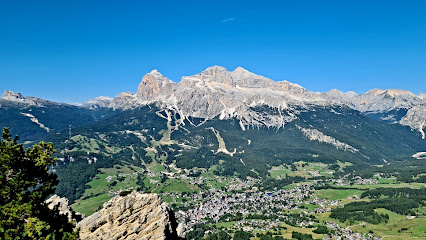
Cascate di Fanes
Discover the enchanting beauty of Cascate di Fanes, a stunning waterfall nestled in the Dolomites, perfect for nature lovers and adventure seekers.

Restaurant Pizzeria “Al Passetto”
Discover authentic Italian flavors in Cortina d'Ampezzo at Restaurant Pizzeria 'Al Passetto', where every pizza tells a story.
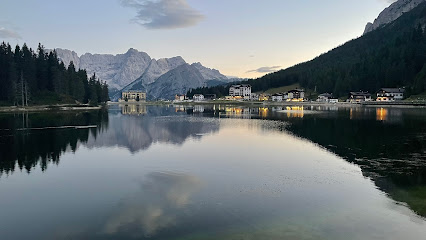
Hotel Villa Argentina Cortina d'Ampezzo
Discover the luxury of Hotel Villa Argentina, your perfect retreat in the breathtaking Dolomites of Cortina d'Ampezzo, Italy.

Birreria & Trattoria Vienna
Experience the authentic taste of Italy at Birreria & Trattoria Vienna in the scenic Cortina d'Ampezzo, where delicious pizza meets a cozy alpine ambiance.

Al Camin
Experience authentic Italian cuisine with breathtaking views at Al Camin in Cortina d'Ampezzo, a culinary delight for tourists and food lovers alike.

El Camineto
Discover the authentic flavors of Italy at El Camineto, a charming restaurant in Cortina d'Ampezzo offering exquisite Italian cuisine and stunning mountain views.

Pasticceria Panificio Alverà
Discover the sweet side of Cortina d'Ampezzo at Pasticceria Panificio Alverà, where exquisite pastries and artisanal gelato await.

Hacker Pschorr Haus
Discover the authentic Bavarian experience at Hacker Pschorr Haus, a lively beer hall in Cortina d'Ampezzo with hearty dishes and exceptional brews.

LP 26 Cortina
Discover authentic Italian flavors at LP 26 Cortina, a cozy restaurant and espresso bar in the heart of the Dolomites.

Janbo
Experience the vibrant nightlife of Cortina d'Ampezzo at Janbo, a lively pub offering delicious food, local brews, and a warm alpine atmosphere.

Ristorante Pizzeria El Bronsin
Discover the authentic flavors of Italy at Ristorante Pizzeria El Bronsin in Cortina d'Ampezzo, where delicious pizzas and traditional dishes await.

Unmissable attractions to see
Brixner Dom
Discover the breathtaking Brixner Dom, a Baroque masterpiece in Brixen, South Tyrol, rich in history and architectural splendor.

Ortisei - Val Gardena
Explore Ortisei in Val Gardena: A stunning alpine destination renowned for hiking, skiing, and rich cultural heritage in the Dolomites.
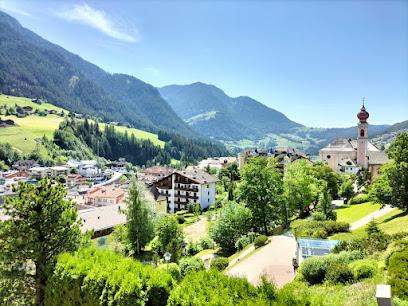
Forte Tre Sassi Museum
Visit Forte Tre Sassi Museum to discover the history of World War I in the stunning Dolomites while enjoying breathtaking views.

Lago di Misurina
Discover the serene beauty of Lago di Misurina, a stunning alpine lake surrounded by the majestic Dolomites, perfect for nature lovers and adventure seekers.
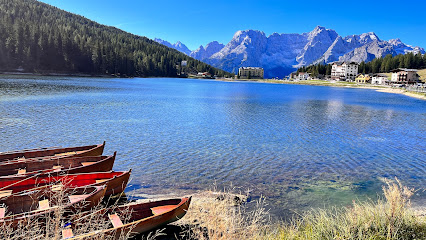
archaeological naturalistic spa area Lagole
Experience the healing waters and rich history of Lagole, an archaeological naturalistic spa area in the heart of the Dolomites, Italy.

Fassa Valley
Explore Fassa Valley: A breathtaking Italian destination offering stunning landscapes, cultural experiences, and year-round outdoor adventures.

Chiostro di Bressanone
Explore the serene beauty and rich history of Chiostro di Bressanone, a must-visit landmark in South Tyrol's enchanting Brixen.

Cascate di Cornolade
Explore the breathtaking Cascate di Cornolade, a stunning waterfall immersed in nature's beauty, offering adventure and tranquility in Belluno, Italy.

Lake Sorapis
Explore the breathtaking beauty of Lake Sorapis, a sparkling turquoise gem nestled in the majestic Dolomites, perfect for nature lovers and adventurers alike.

Lago di Limides
Discover the tranquil beauty of Lago di Limides, an alpine oasis in the heart of the Dolomites, perfect for nature lovers and outdoor adventures.

Tofana di Rozes (3225 mt)
Discover Tofana di Rozes, a breathtaking peak in the Dolomites, offering stunning views and thrilling adventures for nature lovers and adventurers alike.

Paternkofel
Explore the breathtaking beauty of Paternkofel, a majestic peak in Auronzo di Cadore, offering stunning views and thrilling outdoor adventures.

Trailhead: Hiking Track 437
Explore Hiking Track 437 in Cortina d'Ampezzo: A breathtaking journey through the heart of the Dolomites, perfect for adventurers and nature lovers.

Cristallo
Experience the breathtaking beauty and exhilarating adventures at Cristallo Mountain in Auronzo di Cadore, a true gem of the Dolomites.

Forcella Travenanzes
Discover the majestic beauty of Forcella Travenanzes, a hiking paradise in the Dolomites with trails for all levels amidst stunning alpine scenery.

Essential places to dine
Ristorante Pizzeria 5 Torri
Discover authentic Italian flavors at Ristorante Pizzeria 5 Torri in Cortina d'Ampezzo – a perfect blend of tradition and breathtaking mountain views.

Il Vizietto Di Cortina
Experience authentic Italian cuisine at Il Vizietto Di Cortina – where culinary excellence meets breathtaking mountain views.

Il Ponte - Ristorante Pizzeria
Savor authentic Italian cuisine amidst stunning Dolomite landscapes at Il Ponte Ristorante Pizzeria in Cortina d'Ampezzo.
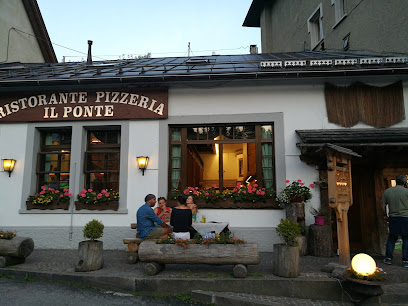
Restaurant Pizzeria “Al Passetto”
Savor authentic Italian pizzas and traditional dishes in the heart of Cortina d'Ampezzo at Restaurant Pizzeria 'Al Passetto', where every bite is a delight.

Ristorante Rifugio Ospitale
Discover authentic Italian cuisine at Ristorante Rifugio Ospitale in Cortina d'Ampezzo – where tradition meets breathtaking alpine views.

Baita Resch
Experience exquisite Italian alpine cuisine at Baita Resch amidst breathtaking Dolomite views.

Baita Piè Tofana
Discover Baita Piè Tofana: An exquisite Italian restaurant offering stunning mountain views and authentic local flavors in Cortina d'Ampezzo.

Restaurant Lake Scin
Discover exquisite Italian cuisine surrounded by breathtaking views at Restaurant Lake Scin in Cortina d'Ampezzo.

Restaurant Col Drusciè 1778
Experience exquisite Italian cuisine with breathtaking views at Restaurant Col Drusciè 1778 in Cortina d'Ampezzo's stunning Dolomites.

Al Camin
Experience authentic Italian cuisine at Al Camin in Cortina d'Ampezzo, where local flavors meet breathtaking alpine views.

El Camineto
Experience exquisite Italian cuisine with stunning mountain views at El Camineto in Cortina d'Ampezzo.

Hacker Pschorr Haus
Discover Hacker Pschorr Haus in Cortina d'Ampezzo - A delightful beer hall offering traditional Bavarian fare and local brews amidst stunning alpine scenery.

LP 26 Cortina
Discover authentic Italian cuisine at LP 26 Cortina, where tradition meets modernity amidst breathtaking alpine views.

Restaurant Ariston Bar
Experience the essence of Italian cuisine at Restaurant Ariston Bar in Cortina d'Ampezzo – where every meal is a celebration of flavor and hospitality.

Ristorante Lago Pianozes di alberti massimo
Experience exquisite Italian cuisine with breathtaking views at Ristorante Lago Pianozes in Cortina d'Ampezzo.

Markets, malls and hidden boutiques
The North Face Store Cortina
Explore the breathtaking Dolomites with high-quality outdoor gear from The North Face Store in Cortina d'Ampezzo, your adventure starts here.

La Sportiva Store - Cortina D'Ampezzo
Discover premium sportswear and outdoor gear at La Sportiva Store in Cortina D'Ampezzo, your gateway to alpine adventures in the Dolomites.

Mountain Shop Cortina
Discover the ultimate outdoor gear and expert advice at Mountain Shop Cortina, your go-to destination for alpine adventures in the heart of the Dolomites.

Blauer Store Cortina D'Ampezzo
Experience the elegance of outdoor fashion at Blauer Store Cortina D'Ampezzo, where style meets functionality in the heart of the Dolomites.

Moncler
Discover the essence of luxury at Moncler in Cortina d'Ampezzo, where high-end fashion meets alpine elegance in a picturesque setting.

Subdued
Discover stylish women's and youth clothing at Subdued, a fashionable clothing store in the stunning Cortina d'Ampezzo, Italy.
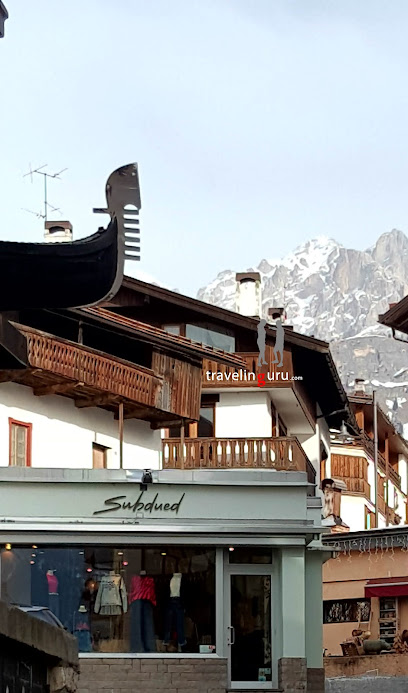
Robe di Kappa 61 Cortina D'Ampezzo
Discover stylish outdoor apparel and chic fashion for all ages at Robe di Kappa in the heart of Cortina D'Ampezzo, Italy.
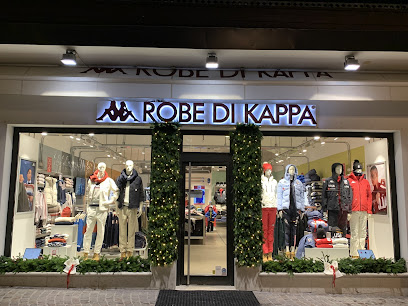
Zenzero Cortina
Discover unique fashion at Zenzero Cortina, the premier clothing store in Cortina d'Ampezzo, blending style and local charm in the heart of the Dolomites.

Crazy Store Cortina
Explore the best in sportswear at Crazy Store Cortina, where quality meets style for your alpine adventures.

BOGNER
Explore Bogner in Cortina d'Ampezzo, where high-quality alpine fashion meets elegance in a breathtaking mountain setting.

Borbonese Boutique Cortina
Explore the luxury of Italian leather goods at Borbonese Boutique in Cortina d'Ampezzo, where elegance meets exceptional craftsmanship.

Art House
Discover unique gifts and artisanal crafts at Art House in Cortina d'Ampezzo, capturing the spirit of Italian artistry in every piece.

Franz Kraler Donna
Discover the elegance of high-end fashion at Franz Kraler Donna, a boutique gem in the stunning Cortina d'Ampezzo.

United Colors of Benetton
Experience vibrant fashion and sustainable style at United Colors of Benetton in the stunning Cortina d'Ampezzo.

Frajo
Discover the authentic essence of the Dolomites at Frajo, a unique store in Cortina d'Ampezzo offering local treasures and handcrafted souvenirs.
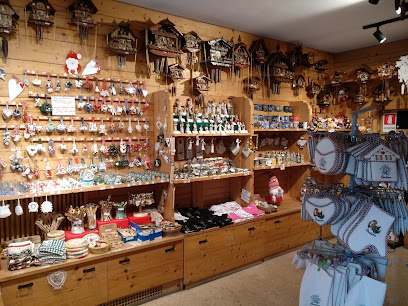
Essential bars & hidden hideouts
Il Vizietto Di Cortina
Experience the best of Italian and seafood cuisine at Il Vizietto Di Cortina, with gluten-free options in a stunning alpine setting.
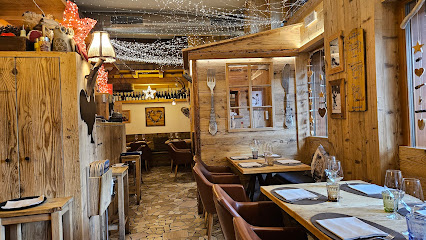
Area 51
Experience the vibrant atmosphere of Area 51, the perfect bar for tourists in the heart of Cortina d'Ampezzo, offering delightful snacks and refreshing beverages.

Bar Sport
Experience the vibrant atmosphere of Bar Sport in Cortina d'Ampezzo, where exceptional drinks and stunning mountain views come together.

Al Camin
Experience authentic Italian cuisine in the heart of Cortina d'Ampezzo at Al Camin, where every meal is a celebration of flavor and tradition.

Hacker Pschorr Haus
Discover Hacker Pschorr Haus, Cortina d'Ampezzo's authentic Bavarian beer hall offering a delightful ambiance, traditional cuisine, and a vast selection of craft beers.

LP 26 Cortina
Discover the essence of Italian cuisine at LP 26 Cortina, where every dish tells a story of tradition and flavor amidst breathtaking mountain views.

Janbo
Discover Janbo: The heart of Cortina d'Ampezzo's pub scene, where warm atmospheres meet local flavors for an unforgettable alpine experience.

Pontejel Bierstube Forst
Experience authentic Italian cuisine and a fantastic beer selection at Pontejel Bierstube Forst in beautiful Cortina d'Ampezzo.

Molo Cortina
Experience the warmth of Molo Cortina, a charming pub in Cortina d'Ampezzo, where great drinks and a lively atmosphere await.

Dolom'eats all'Aquila
Discover the flavors of the Dolomites at Dolom'eats all'Aquila, a premier restaurant in Cortina d'Ampezzo, blending tradition with modern culinary artistry.

Chalet Tofane
Experience authentic Italian cuisine at Chalet Tofane, surrounded by the breathtaking beauty of the Dolomites in Cortina d'Ampezzo.

SanBrite
Experience fine dining at SanBrite in Cortina d'Ampezzo, where culinary excellence meets breathtaking Alpine views.

Bar Dolomiti
Discover the charm of Bar Dolomiti in Cortina d'Ampezzo, where cozy atmosphere meets delightful Italian flavors in the heart of the Dolomites.

La Suite
Discover La Suite, a cozy bar and café in Cortina d'Ampezzo, offering delightful beverages and a warm atmosphere perfect for relaxation.

Bar Pierosa
Experience the charm of Bar Pierosa in Cortina d'Ampezzo, where alpine beauty meets delightful beverages and local hospitality.

Local Phrases about Cortina d'Ampezzo
-
- HelloCiao
[chow] - GoodbyeArrivederci
[ar-ri-ve-der-chi] - YesSì
[see] - NoNo
[no] - Please/You're welcomePer favore/Prego
[per fa-vo-re/pre-go] - Thank youGrazie
[gra-tsi-e] - Excuse me/SorryScusa/Scusami
[sku-sa/sku-sa-mi] - How are you?Come stai?
[co-me stai] - Fine. And you?Bene. E tu?
[be-ne/e tu] - Do you speak English?Parli inglese?
[par-li in-gle-se] - I don't understandNon capisco
[non ca-pi-sco]
- HelloCiao
-
- I'd like to see the menu, pleaseMi piacerebbe vedere il menù, per favore
[mi pia-che-reb-be ve-de-re il me-nu/per fa-vo-re] - I don't eat meatNon mangio carne
[non man-djo car-ne] - Cheers!Salute!
[sa-lu-te] - I would like to pay, pleaseVorrei pagare, per favore
[vo-rrei pa-ga-re/per fa-vo-re]
- I'd like to see the menu, pleaseMi piacerebbe vedere il menù, per favore
-
- Help!Aiuto!
[aiu-to] - Go away!Vattene!
[vat-te-ne] - Call the Police!Chiama la polizia!
[chia-ma la po-li-zia] - Call a doctor!Chiama un dottore!
[chia-ma un dot-to-re] - I'm lostMi sono perso
[mi so-no per-so] - I'm illSto male
[sto ma-le]
- Help!Aiuto!
-
- I'd like to buy...Vorrei comprare...
[vo-rrei com-pra-re] - I'm just lookingSto solo guardando
[sto so-lo guar-dan-do] - How much is it?Quanto costa?
[quan-to co-sta] - That's too expensiveÈ troppo caro
[e tro-po ca-ro] - Can you lower the price?Puoi abbassare il prezzo?
[puo-i ab-bas-sa-re il pre-zzo]
- I'd like to buy...Vorrei comprare...
-
- What time is it?Che ora è?
[ke o-ra e] - It's one o'clockÈ l'una
[e lu-na] - Half past (10)Sono le dieci e mezza
[so-no le die-ci e met-tsa] - MorningMattina
[mat-ti-na] - AfternoonPomeriggio
[po-me-rid-djo] - EveningSerata
[se-ra-ta] - YesterdayIeri
[ie-ri] - TodayOggi
[od-dji] - TomorrowDomani
[do-ma-ni] - 1Uno
[u-no] - 2Due
[du-e] - 3Tre
[tre] - 4Quattro
[quat-tro] - 5Cinque
[chin-que] - 6Sei
[sei] - 7Sette
[set-te] - 8Otto
[ot-to] - 9Nove
[no-ve] - 10Dieci
[die-ci]
- What time is it?Che ora è?
-
- Where's a/the...?Dov'è un/il...
[do-ve un/il] - What's the address?Qual è l'indirizzo?
[qual e lin-di-rit-so] - Can you show me (on the map)?Puoi mostrarmi (sulla mappa)?
[puo-i mo-strar-mi/sul-la map-pa] - When's the next (bus)?Quando passa il prossimo (autobus)?
[quan-do pas-sa il pros-si-mo/au-to-bus] - A ticket (to ....)Un biglietto (per ....)
[un bil-let-to/per]
- Where's a/the...?Dov'è un/il...
History of Cortina d'Ampezzo
-
Cortina d'Ampezzo's earliest known history dates back to prehistoric times, with archaeological findings suggesting human habitation as far back as the Paleolithic era. The region later fell under Roman influence, as evidenced by various artifacts and ancient roads. The Romans recognized the strategic importance of the Ampezzo Valley, which connected the Puster Valley with the Piave Valley, enhancing trade and military movements.
-
During the medieval period, Cortina d'Ampezzo was governed by the Patriarchate of Aquileia, a powerful ecclesiastical state in northeastern Italy. This era saw the construction of several fortifications and castles to protect the valley from invading forces. The region's alpine geography and the resilience of its inhabitants kept Cortina relatively independent, even as the surrounding areas were embroiled in conflicts.
-
In the 14th century, Cortina d'Ampezzo became part of the County of Tyrol and subsequently fell under the control of the Habsburg Empire. This period brought relative stability and prosperity to the region, as the Habsburgs invested in infrastructure and promoted trade. The Baroque architecture that graces Cortina's streets today is a testament to this era of cultural and economic growth.
-
Cortina d'Ampezzo was significantly affected during World War I, as it sat on the front lines of the conflict between Italy and Austria-Hungary. The rugged terrain of the Dolomites witnessed intense battles, with soldiers constructing tunnels and trenches in the mountains. The legacy of this period is still visible today, with numerous war memorials, museums, and preserved fortifications that tell the story of the Dolomite Front.
-
Following World War I and the Treaty of Saint-Germain in 1919, Cortina d'Ampezzo was annexed to Italy. The interwar period saw the beginning of Cortina's transformation into a tourist destination, as its stunning landscapes and pristine environment attracted visitors from around the world. Skiing and mountaineering became popular activities, laying the groundwork for Cortina's future as a premier alpine resort.
-
A defining moment in Cortina d'Ampezzo's modern history was hosting the 1956 Winter Olympics. This event put Cortina on the international map as a world-class winter sports destination. The infrastructure improvements and global exposure from the Olympics spurred further development in tourism and hospitality, solidifying Cortina's reputation as the 'Queen of the Dolomites.'
-
Cortina d'Ampezzo boasts a rich cultural heritage influenced by its Ladin roots and centuries of Germanic and Italian rule. Traditional Ladin festivals, such as the 'Sagra d'Ampezzo,' celebrate the region's unique customs, cuisine, and folklore. The town's architecture, featuring a blend of Tyrolean and Venetian styles, reflects its diverse historical influences. Artisans in Cortina continue to produce exquisite wood carvings, textiles, and other crafts, preserving the cultural legacy for future generations.
Cortina d'Ampezzo Essentials
-
Cortina d'Ampezzo can be accessed via several routes. The nearest major airport is Venice Marco Polo Airport (VCE), located about 162 kilometers away. From the airport, you can take a bus, rent a car, or use a private transfer service to reach Cortina d'Ampezzo. Alternatively, you can fly into Treviso Airport (TSF), which is approximately 130 kilometers away. Another option is to travel by train to Calalzo di Cadore, the nearest train station, and then take a bus or taxi for the remaining 35 kilometers to Cortina.
-
Cortina d'Ampezzo is well-connected with a reliable public transportation system. Local buses run frequently and can take you to popular spots and nearby villages. Taxis are available but can be expensive. For those looking to explore the region more freely, renting a car is an excellent option. During the winter season, ski buses operate to transport visitors to various ski resorts and lifts.
-
The official currency in Italy is the Euro (EUR). Most hotels, restaurants, and shops in Cortina d'Ampezzo accept credit and debit cards. However, it is advisable to carry some cash, especially for small purchases or in more remote areas. ATMs are widely available throughout the town for cash withdrawals.
-
Cortina d'Ampezzo is generally a safe destination for tourists. Petty crimes such as pickpocketing can occur, especially in crowded areas, so it is wise to stay vigilant. Avoid leaving your belongings unattended and be cautious when using ATMs. There are no specific high-crime areas targeting tourists, but standard travel precautions are recommended.
-
In case of emergency, dial 112 for immediate assistance. This number connects you to emergency services, including police, fire, and medical help. The local hospital, Ospedale di Cortina d'Ampezzo, provides medical services. It is advisable to have travel insurance that covers medical emergencies. Pharmacies are available in town for minor health issues and over-the-counter medications.
-
Fashion: Do dress stylishly, as Italians take pride in their appearance. Avoid overly casual or beachwear attire in town. Religion: Do respect religious customs when visiting churches; cover your shoulders and knees. Public Transport: Do have a ticket before boarding; don't forget to validate it. Greetings: Do greet people with a 'Buongiorno' (Good morning) or 'Buonasera' (Good evening). A handshake is common. Eating & Drinking: Do try local dishes and wines. Don't ask for heavy modifications to traditional recipes, as this is considered impolite.
-
To experience Cortina d'Ampezzo like a local, visit the local markets where you can buy fresh produce and artisanal goods. Engage with locals and try to learn a few basic Italian phrases, as this can enhance your experience. Don't miss the chance to explore the Dolomites, whether through hiking, skiing, or a scenic drive. Participate in local festivals and events to immerse yourself in the culture.
Trending Landmarks in Cortina d'Ampezzo
-
La Cooperativa di Cortina
-
Il Vizietto Di Cortina
-
Forte Tre Sassi Museum
-
Faloria cable car
-
Cascate di Fanes
-
Restaurant Pizzeria “Al Passetto”
-
Hotel Villa Argentina Cortina d'Ampezzo
-
Birreria & Trattoria Vienna
-
Al Camin
-
El Camineto
-
Pasticceria Panificio Alverà
-
Hacker Pschorr Haus
-
LP 26 Cortina
-
Janbo
-
Ristorante Pizzeria El Bronsin
Nearby Cities to Cortina d'Ampezzo
-
Things To Do in Bad Gastein
-
Things To Do in Zell am See
-
Things To Do in Kitzbühel
-
Things To Do in Venice
-
Things To Do in Kranjska Gora
-
Things To Do in Nova Gorica
-
Things To Do in Bohinj
-
Things To Do in Verona
-
Things To Do in Bled
-
Things To Do in St. Anton am Arlberg
-
Things To Do in Salzburg
-
Things To Do in Piran
-
Things To Do in Portorož
-
Things To Do in Trieste
-
Things To Do in Hallstatt













